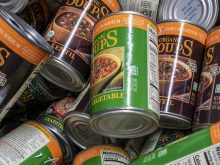Canadians love to camp. We have wonderful campgrounds and beautiful wilderness to do it in. People camp for adventure and to make memories, but some unhappy memories may result if you haven’t planned ahead.
A camping trip can feel like you’re moving because there’s so much to bring. My family has a list of essentials needed on any camping trip to ensure that important things are never forgotten from year to year.
The camping list is stored in a safe place in a file marked holidays in the home office. Perhaps you keep yours in a shoebox with maps and tourist brochures on a shelf in your basement. We made photocopies to share among family members and keep an extra in a second storage spot, just in case. The list is a valuable asset that makes our holiday a success.
Read Also

Fuel rebate rule change will affect taxes and AgriStability
The federal government recently announced updates to the fuel rebates that farmers have been receiving since 2019-20.
Our family uses tents when we camp, so some of the items we must pack won’t be necessary for other campers who use a trailer or motor home.
Here are essentials on our list:
- Obvious items like matches, can opener, dish soap, plastic basin for washing, insect repellent, sunscreen, and flashlights.
- Extra tent poles and pegs for times when something breaks.
- Clothesline and clothespins for hanging towels, bathing suits, dish clothes and wet clothing.
- Newspaper for starting fires. Another idea is fire starters made from toilet paper rolls, cut in half, filled with dryer lint, and the ends folded closed. Dryer lint catches fire easily and these items make fire starting easy.
- Two or three heavy-duty spring clamps. They’re good for all kinds of emergencies, from holding a tent zipper closed, or to hang things on trees, or for holding a tablecloth in place on a windy day. Their uses are endless.
- A mat for the doorway catches dirt from shoes to reduce litter tracked into the tent or trailer.
- Children’s foam puzzle floor mats placed inside the tent protect against stones hiding under the tent floor. They can be placed in a different arrangement for each situation. They can be laid on the beach for a smooth surface, or to make a path from the table to the tent or trailer.
- Disposable face wipes make it easy to clean hands before meals or just to freshen up. They’re good to wipe a scraped knee before applying a Band-Aid and they reduce water use.
- Ice or frozen ice pack keeps food chilled in coolers but also works as a first-aid treatment for sore muscles or a bee sting.
- Jackets and sun hats.
- A phone charger is essential to have communication in the wilderness in case of an emergency.
Once you’ve arrived at the campsite, it’s the little things that are easy to lose, and often they are the most essential, like matches. Here are some ways to keep things handy and safely stored:
- A hanging mesh organizer: These keep small things safe and easy to access when needed. Hang them at one end of the clothesline. Keep small things in them: a first-aid kit, matches or lighter, cooking utensils, spices, clips and clamps, clothes pegs.
- Another hanging mesh organizer inside the tent is a good place to keep small things you’ll need there: flashlights, hair accessories, toothbrushes, toothpaste.
- Mess kits for each person: a plate, bowl, cup and utensils. Buy the type that has all metal components, not the plastic options. Also, look for the ones that come with a bag for storage. These are better than the ones where each piece has to fit in a specially formed place. Kids don’t want to spend time inserting their dishes and utensils in specially designed spaces. If the kit doesn’t come with a bag, find a draw-string bag to store them in. Each person is responsible for washing and storing their own kit. Hang them on or near the clothesline where they’ll be waiting for the next meal.
Here is a basic list. Add your own prescriptions and other essentials:
- bandages
- first-aid cream to fight infection
- burn medication
- a pen
- tweezers for slivers or a bee sting
- package of alcohol wipes (wipes are smaller and lighter than a bottle and won’t break and spill)
- a tube of insect bite medication
- a triangle of fabric for a quick and easy sling
Here are basic steps on what to do for an insect sting:
- Remove the stinger with tweezers if it’s still in the skin. The longer it stays in the skin, the more venom it will release.
- With the pen, draw a circle around the swelling. Then you can tell if the swelling increases or decreases over time.
- Apply ice or an ice pack.
- Consider taking pain medication.















